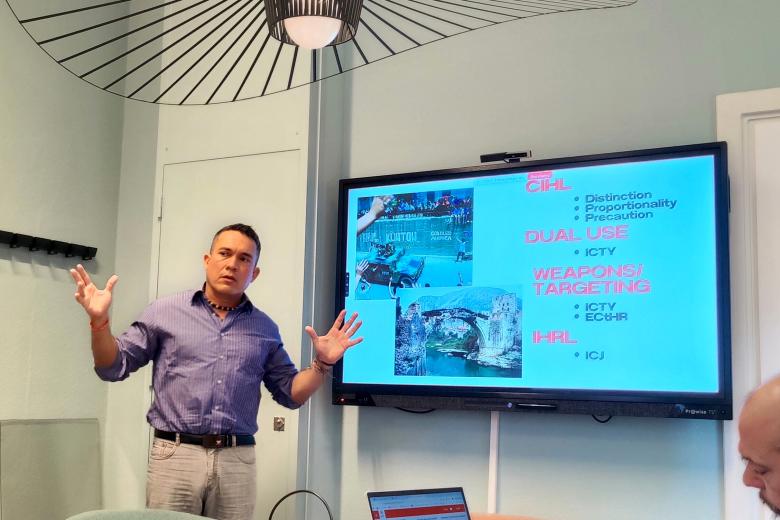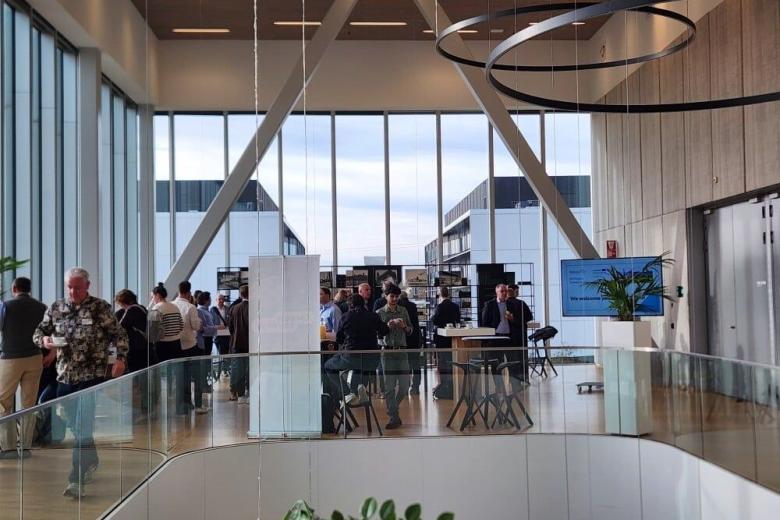Taking a peek inside your gut: TIM shows the real effects of food
At Brightlands Campus Greenport Venlo, two ingenious machines mimic the intestines of humans and animals: TIM-1 and TIM-2. Maastricht University researchers are using these artificial intestines to test the effects of food on the small and large intestines. “We get the chance here to literally see what food does in your body.”
At one of the laboratories at Maastricht University’s Centre for Healthy Eating and Food Innovation, Sanne Verbruggen and Jessica Verhoeven work with an unusual pair: TIM-1 and TIM-2. These are artificial intestines that can very precisely mimic the bacterial balance in the intestines. TIM-1 contains an artificial stomach and small intestine and TIM-2 a colon. And yes, sometimes, there’s an odor, the researchers laughingly admit: “If you mimic the colon, odors are inevitable, but you get used to it.”
TIM stands for TNO In Vitro Model, a system that consists of an ingenious structure of glass tubes, membranes, tubing, sensors and software. There are only a few of these systems worldwide. One of them is located at Brightlands Campus Greenport Venlo, strategically nestled between companies that focus on healthy nutrition and innovation.
Real time
The artificial intestines were developed by TNO Nutrition in Zeist. “These machines enable us to monitor intestinal flora in real time,” Jessica says. “In human research, you rely on what leaves the body after 24 to 72 hours, but by then, you’re actually too late. TIM allows us to track exactly what happens along the way.”
TIM-1’s stomach is fed with food that has been “chewed” using a food processor and to which stomach acid and enzymes have been added. After a six- to eight-hour journey through the small intestine, the duodenum, the jejunum and ileum, the residue is collected and transferred to TIM-2, the colon. “It works entirely without oxygen, just like the process in the human body where processing takes around 72 hours.”
Immune system
According to the two researchers, intestines play an important role in our bodies. Aside from digesting and processing food, they also maintain the immune system. “Trillions of bacteria live in our intestines, and together with viruses, yeasts and fungi, they make up our microbiome. Among other things, this microbiome helps with the growth and division of immune cells and supports the immune system in fighting viruses or other pathogens,” Sanne says. Jessica adds: “Over 70% of your resistance is in your colon. When your microbiome is balanced, your natural defenses function better. You are less likely to get sick, you’ll recover faster and symptoms can be milder.”

Probiotics and proteins
TIM enables researchers to precisely measure the effects of food on this microbiome, and whether or not it contributes to health. Companies contact the lab for a variety of research. “We test drinks, tablets and capsules with probiotics, bacteria that have a beneficial effect in the intestines. We study whether the probiotics actually enter the intestines, do their job there and what the body absorbs from them,” Sanne explains. Recently, many studies have also been conducted on alternative sources of protein. “These days, more and more plant-based and alternative proteins are available, but we don’t really know how the body processes them yet. We’re actively studying this now.”
Baby food
A study on baby food is now also underway. “A baby’s microbiome is in full development at birth. It doesn’t stabilize until around the third year of life, becoming comparable to that of an adult,” Sanne says. During their first few months, babies are often only breast- or bottle-fed. “The main difference between breast milk and formula lies in the unique composition of breast milk. We’re currently conducting tests with several substances in different concentrations to study how a baby’s microbiome responds to them and whether we can more closely approximate the original, breast milk, with formula.”

No coincidence
TIM’s presence at Brightlands Campus Greenport Venlo is no coincidence. Jessica: “There are many companies based at the campus that are involved in innovative and healthy nutrition. It’s easy to come in contact with these organizations, and we’re already working closely together. These short lines are worth their weight in gold: by collaborating early in the development process, we are accelerating the science and product development. Besides, TIM is helping us gain a better understanding of how food really works in the body. It helps us provide evidence for the effect of a healthy diet, literally from the inside out.”
Source: Brightlands news
“Besides, TIM is helping us gain a better understanding of how food really works in the body. It helps us provide evidence for the effect of a healthy diet, literally from the inside out.”
Jessica Verhoeven
Also read
-
Andrés Caceres Solari on No room for Human Rights in Gaza and Ukraine: How the Law Legitimizes Urban Devastation
Pick Our Brains Session with Andres Caceres Solari

-
AMIBM hosts the final Realise-Bio conference
The Aachen Maastricht Institute of Biobased Materials (AMIBM) hosted last week the third and final Realise-Bio annual conference, bringing together the Dutch and German bioeconomy ecosystems at the Brightlands Chemelot Campus.

-
Macrophages as key to treating liver fibrosis
Sabine Daemen is researching how certain macrophages can slow down fatty liver disease and fibrosis in order to develop new therapies.
